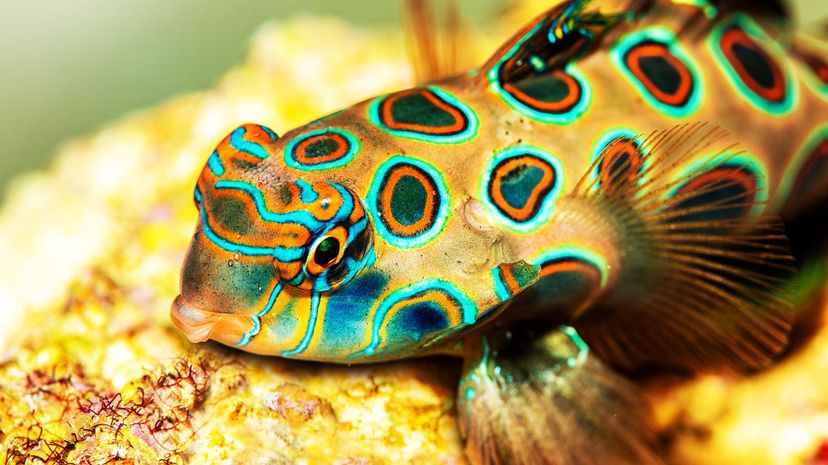
About This Quiz
Walk into a doctor's waiting room or a fancy restaurant, and the chances are good you'll see a saltwater aquarium filled with vibrantly colored fish. Indeed, there are about 2,000 saltwater fish species found in captivity. But of course, in the vast oceans, there are so many more — scientists estimate there are as many as 20,000 species of marine fish in the world.
If someone gave you some Magic Markers and told you to draw a fish, you probably couldn't come up with some of the amazing patterns found on saltwater fish. Some fish are known for the intricate designs of stripes, swirls and dots, in every color imaginable. Some have spines or long, flowing fins. Other fish have big, pouty lips or quizzical eyes. There's no question about it — the oceans hold some of the most incredible creatures that many people will never see unless they're fortunate enough to go scuba diving or visit an aquarium.
If you consider yourself a skilled ichthyologist, then you'll have no problem naming these different saltwater fish species! And if you find some of them tricky, it's OK to mullet over. You'd betta believe that you'll be hooked once you start!
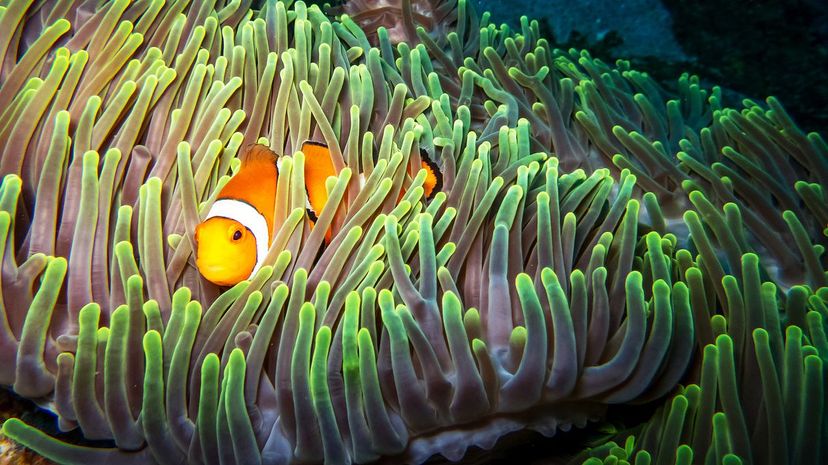
The clownfish, popularized by the movie "Finding Nemo," is usually orange or yellow with white bands around its body. Also called anemonefish, they live in reefs in the Pacific and Indian Oceans.
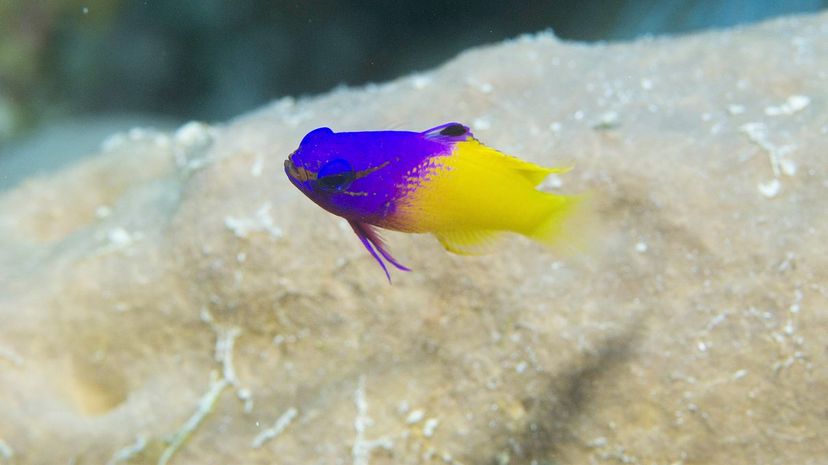
The royal gramma is a small fish usually around 3 inches long and found in the Atlantic Ocean. The coolest thing about it is its radical color change, from purple at the head to gold at the tail.

Also called a horseface blenny, the redlip blenny is very territorial and will bite enemies with its canine teeth. Redlip blennies, as the name suggest, have red lips and a brown body.
Advertisement
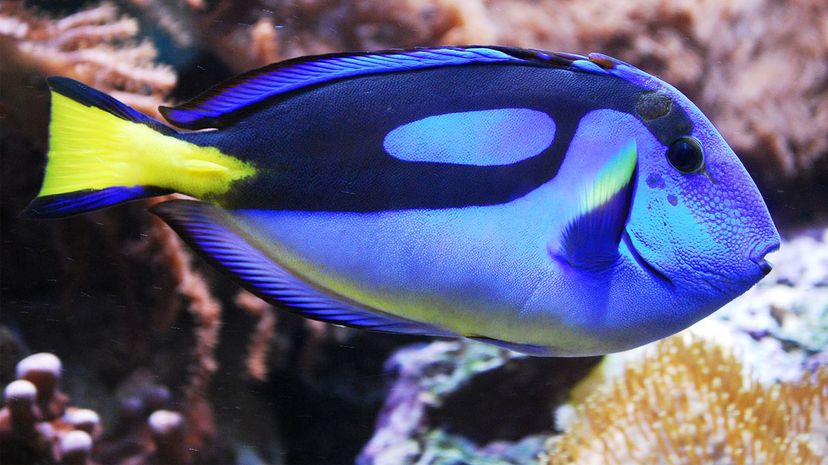
Its scientific name is Paracanthurus hepatus, but people commonly call it a blue tang, palette surgeonfish or hippo tang. The fish is flat, with a blue and black body and yellow tail.
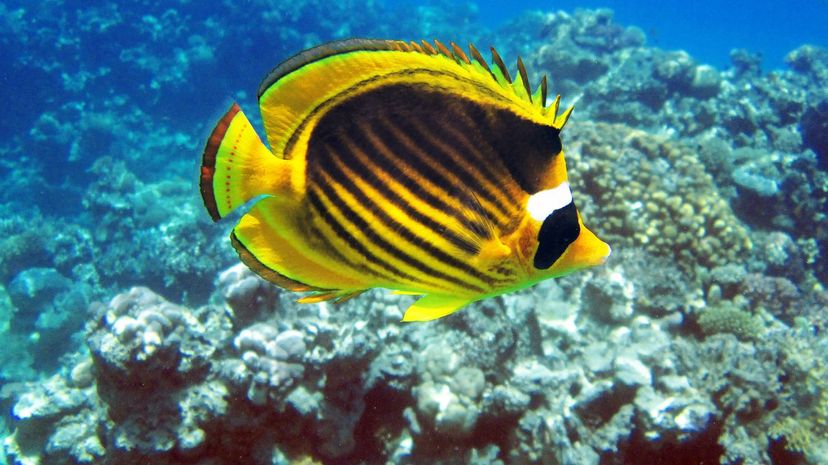
You can identify these oval-shaped fish by their raccoon markings around the eyes. Raccoon butterflyfish are nocturnal, reach about 8 inches in length and live in tiny groups.
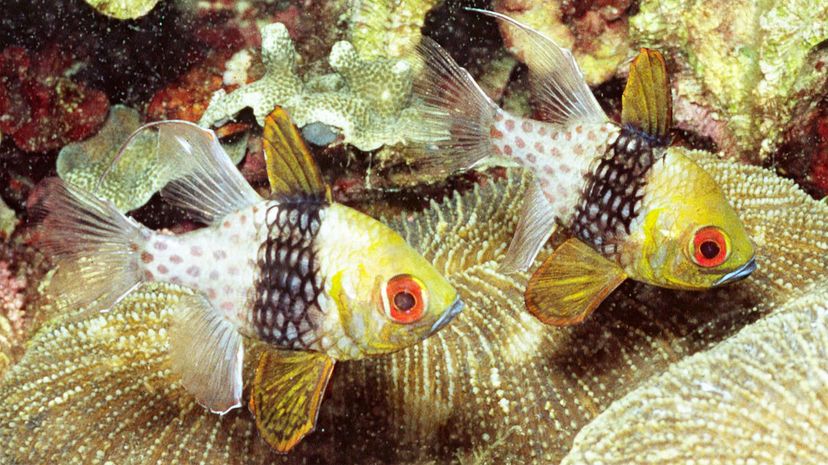
This fish is also called the polkadot cardinalfish, which gives you a hint about its most distinctive trait. Pajama cardinalfish appear in a wide variety of colors but typically have orange eyes.
Advertisement
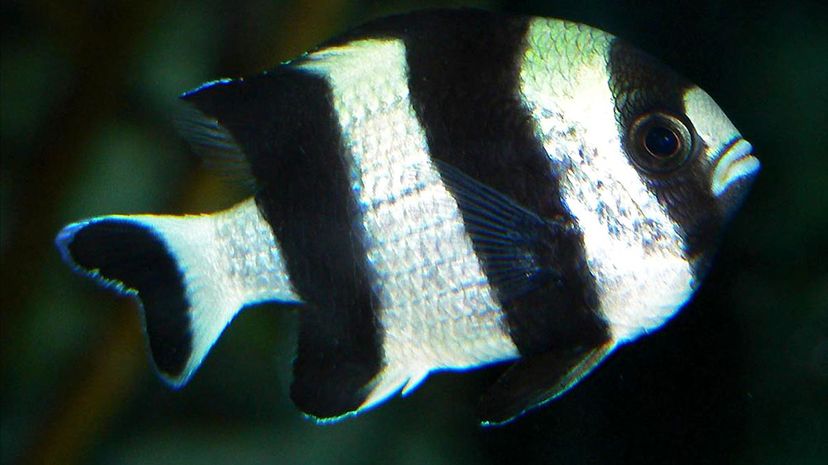
So named because of the four black stripes on its white body, the four stripe damsel is omnivorous and lives in the Pacific Ocean. Like most damsels, it is also aggressive in defending its territory.
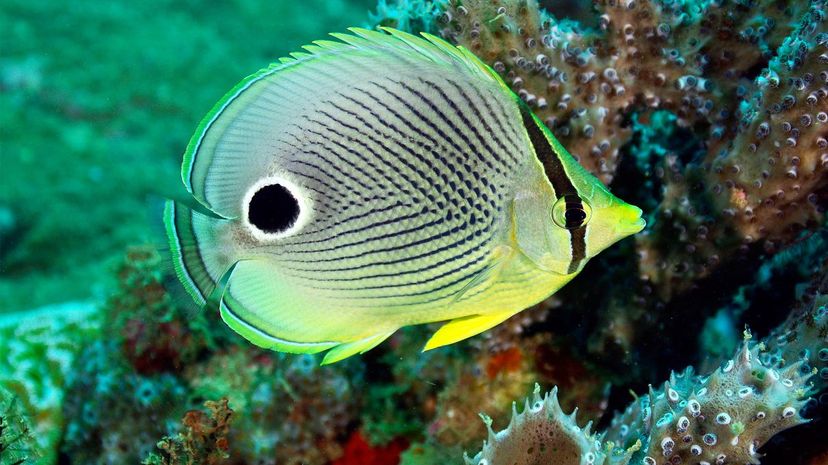
The four-eyed butterflyfish gets its name because of the eyelike dots ringed with white appearing near the tail. This characteristic makes it easier for the fish to flee predators!
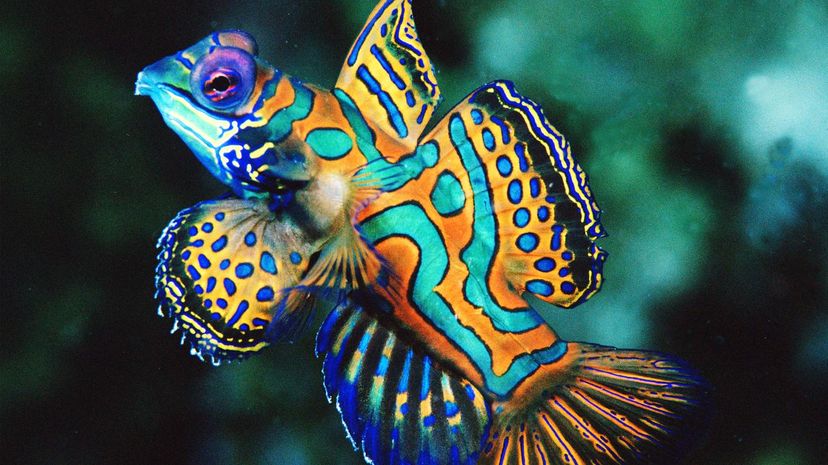
The mandarinfish hails from the Pacific Ocean and is known for its vibrant colors. The fish has red eyes with black pupils, giving it a watchful appearance. Mandarinfish thrive in coral reefs.
Advertisement
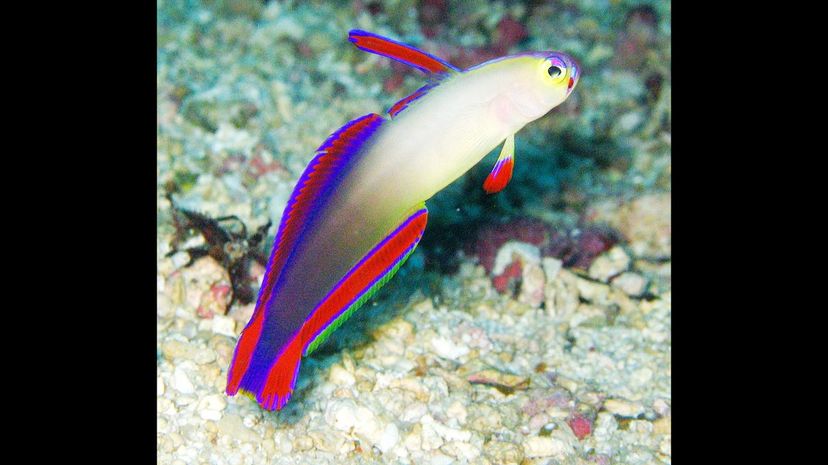
A type of dartfish, the elegant firefish thrives in tropical waters and dines on zooplankton. Also called a purple firefish, it has a light-colored body and a long tail with colorful stripes.
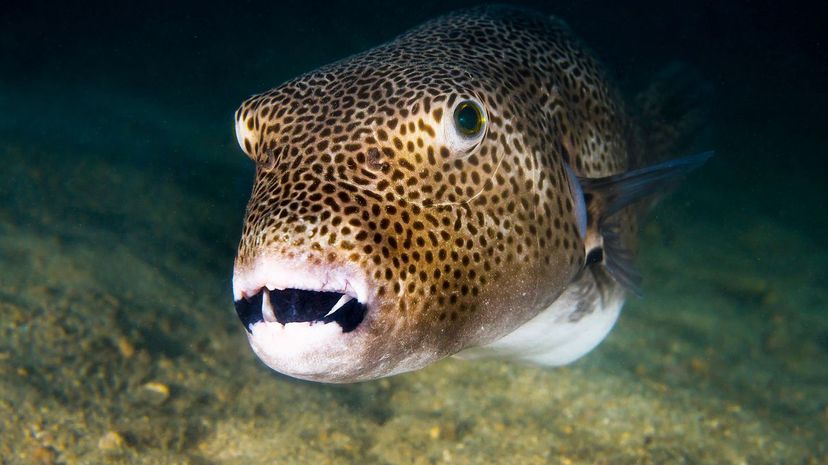
This light-colored fish has prickly skin and is covered all over with small black dots. Reaching a length of 47 inches, it protects itself from predators by inflating itself and with its toxicity.
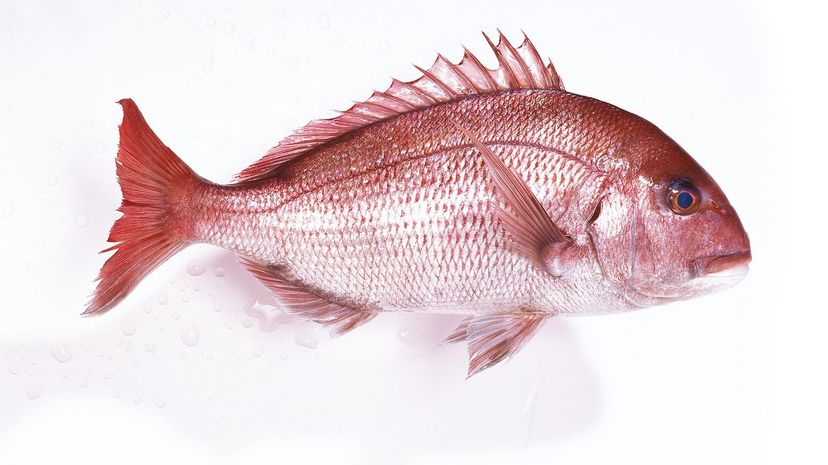
Yes, that's right — the red porgy is a protogynous hermaphrodite, which means all the fish start out as female and some later become male. Red porgies hang around the seabed to find food.
Advertisement
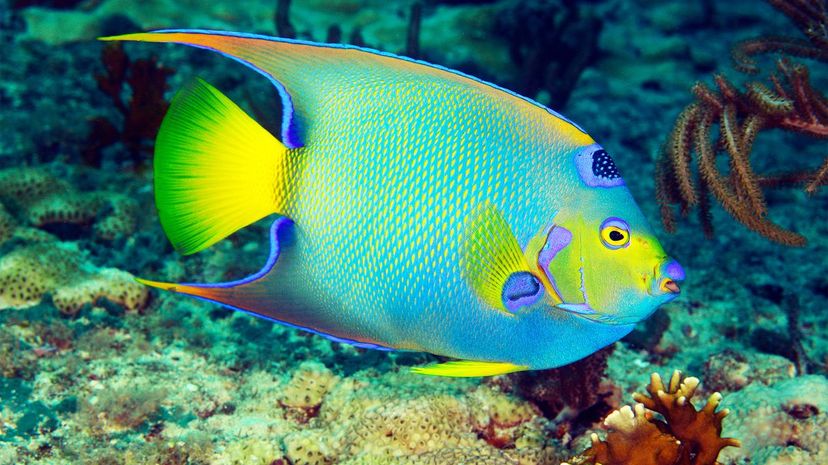
You can find queen angelfish around the Florida Keys and the Bahamas. They are possibly monogamous because they're commonly seen in pairs. The fish can live up to 15 years.
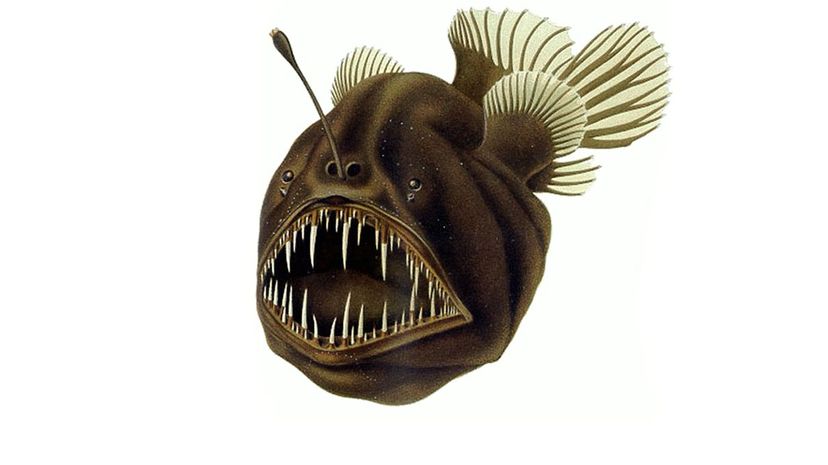
The humpback anglerfish lives up to 4,000 meters below the sea, where the only light comes from bioluminescent organisms. Females of this species are vastly bigger than the males.
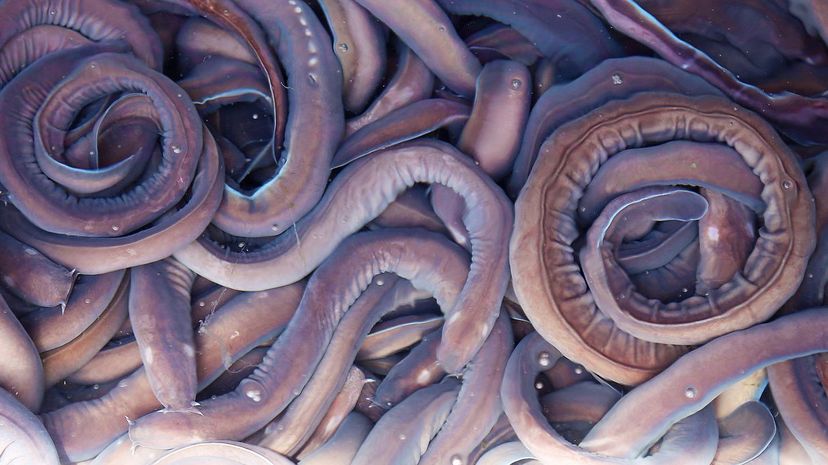
Hagfish are known for being slimy and jawless. Resembling eels, they can reach lengths of 25 inches. Their secret weapon lies in their ability to produce slime, which tastes quite icky.
Advertisement
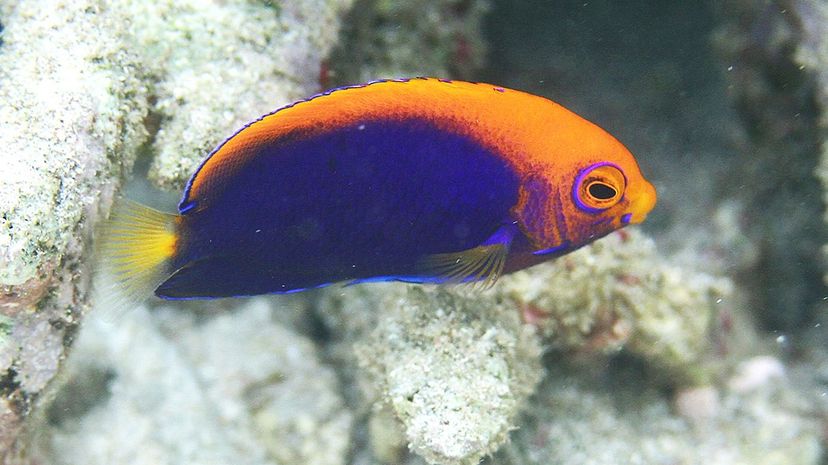
Did the orange stripe from the head across the back give it away? This blue, omnivorous fish, also called the African pygmy angelfish, is typically no longer than 8 centimeters.
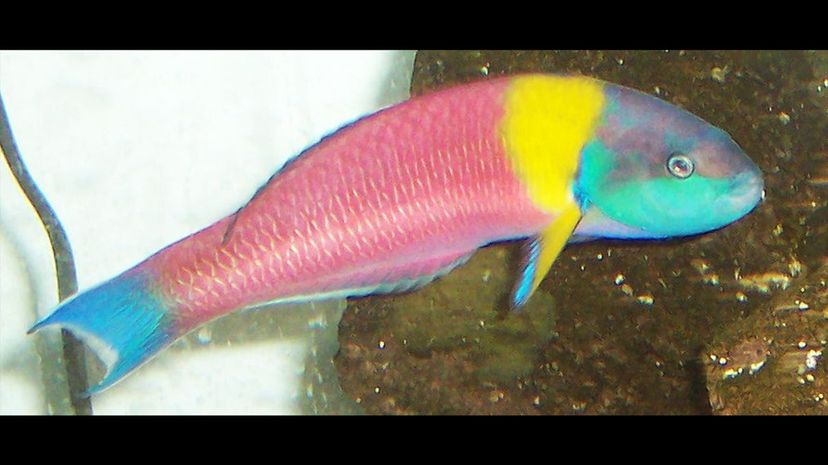
Appearing in the Pacific Ocean, the Cortez rainbow wrasse has blue, yellow and purple bands down its body. Reaching only 6 inches in length, the fish mostly eats fish eggs and plankton.
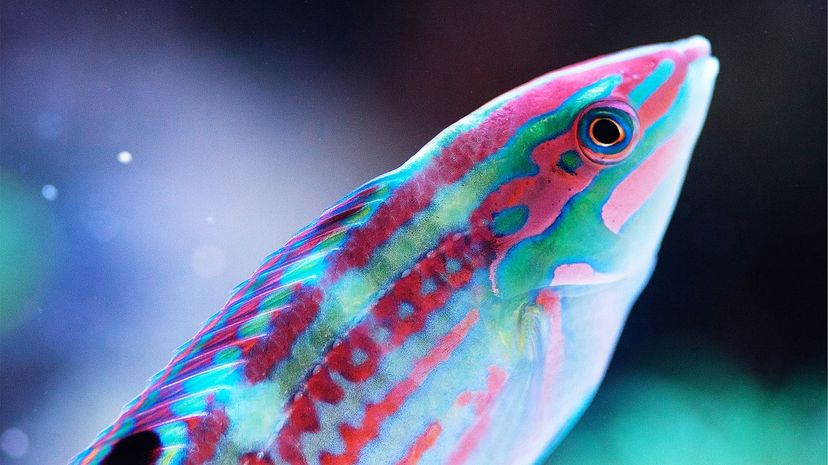
This fish is common in the Indian and Pacific Oceans and reaches typically no more than 12 inches in length. Its most distinctive characteristic is its radiant colors, similar to Christmas tree lights!
Advertisement
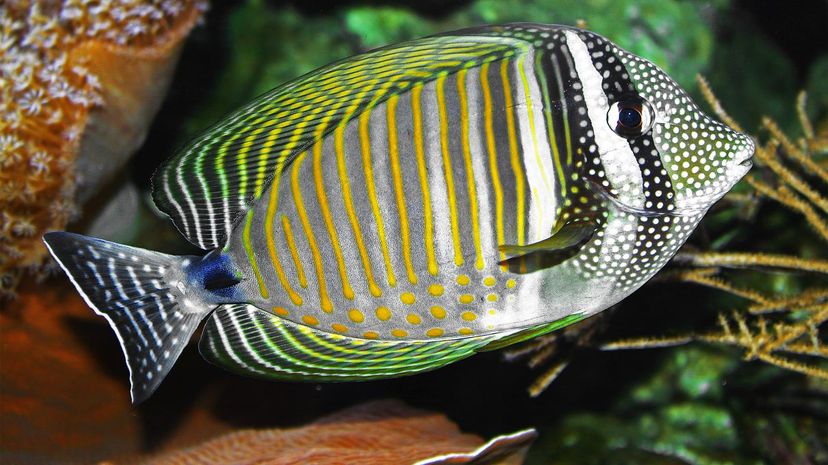
The colors on the Red Sea sailfin tang may vary from fish to fish, but it tends to have stripes on the body and fins and small spots on its face and tail. These tropical fish grow up to 16 inches.
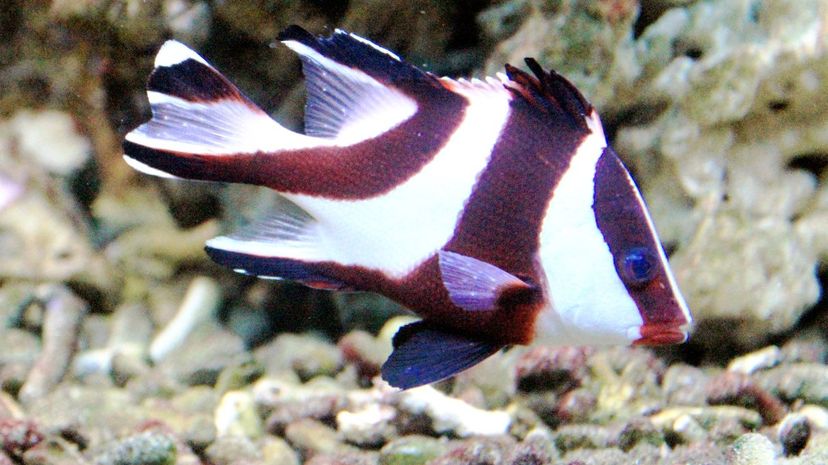
This large fish makes its home in the Pacific and Indian Oceans and has thick white and red bands along its body. The red emperor snapper feels most comfortable in coral reefs, where it can hide.
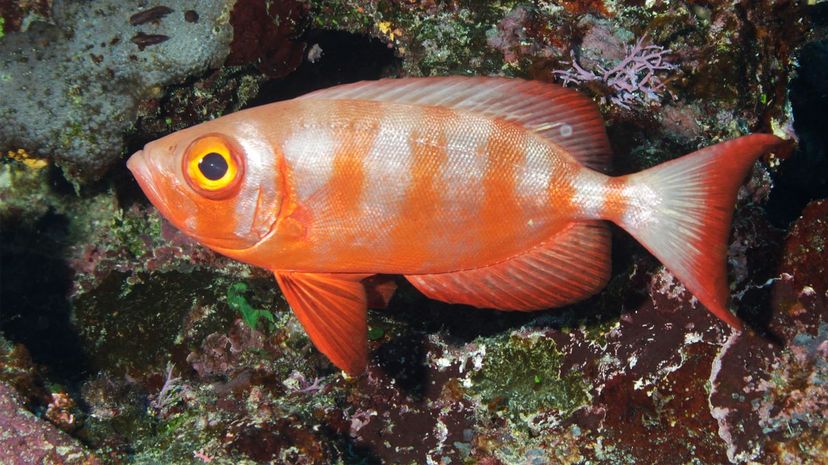
This orange and red fish has white stripes and big, black eyes. They enjoy eating worms and crustaceans and have an unusual habit of swimming upside down. They're common in the Atlantic.
Advertisement
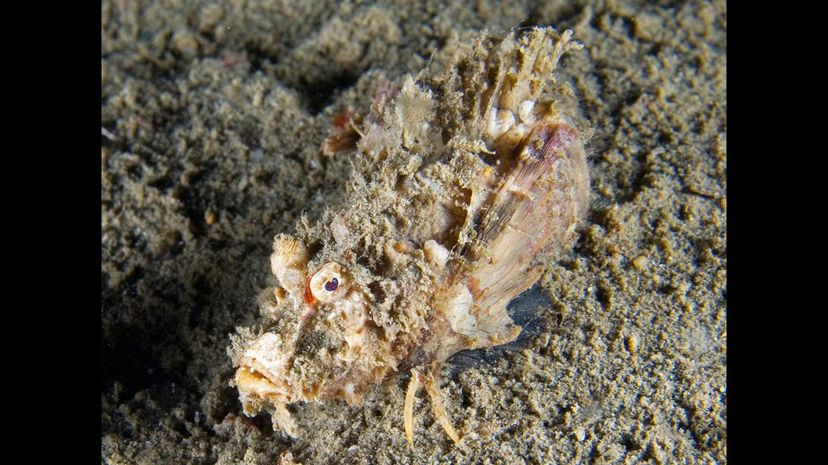
Also called a devil stinger, the venomous sea goblin is covered in sharp spines to keep predators at bay. This nocturnal fish buries itself in the sand and waits patiently to attack prey.
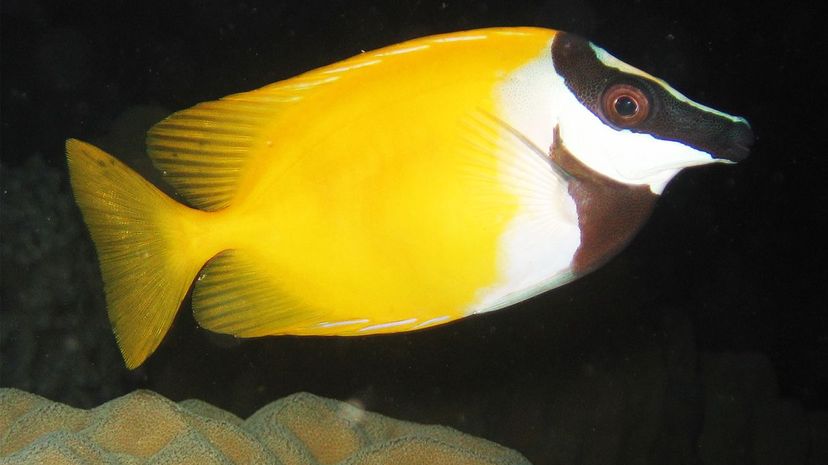
Thanks to the foxface rabbitfish's venomous spines, other fish tend to leave it alone! The omnivorous fish normally has bright colors, but it can dull them to help it blend in.
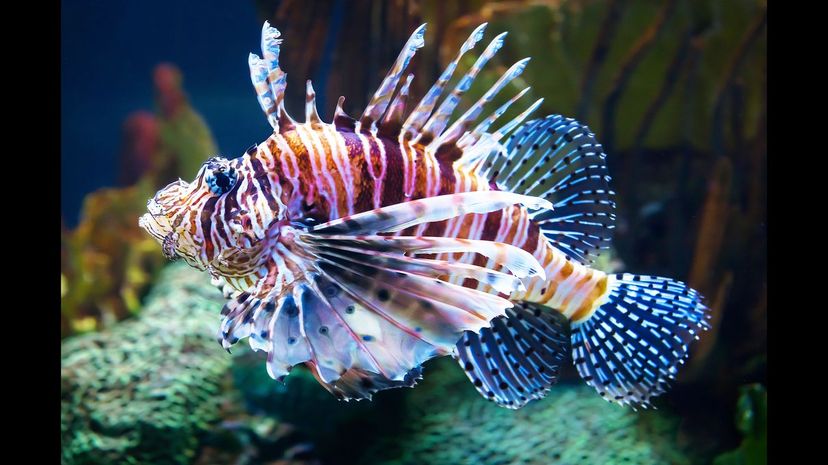
Oddly, the zebra lionfish also goes by the name zebra turkeyfish — perhaps because of the way the fish spreads out its pectoral fins. Most fish leave it alone due to its venom, but grouper will eat it.
Advertisement
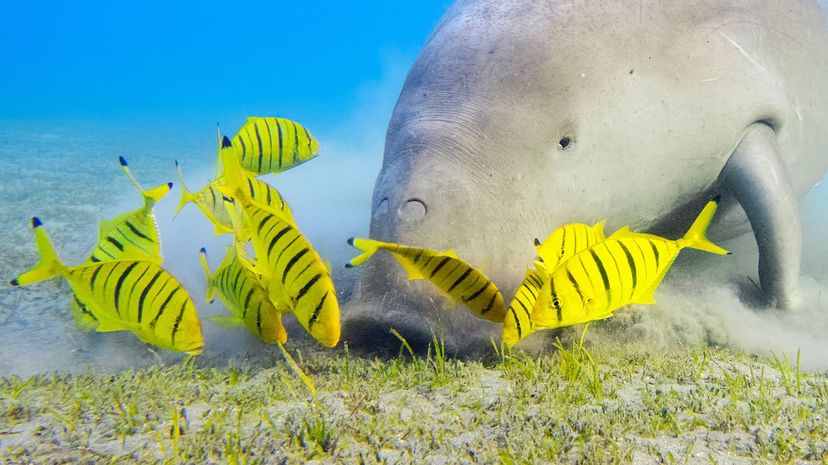
The golden trevally (shown here with a dugong feeding on seagrass beds) thrives in the tropical waters of the Pacific and Indian Oceans. The striped fish with rubbery lips starts out a bold yellow but develops a silvery color as it gets older.
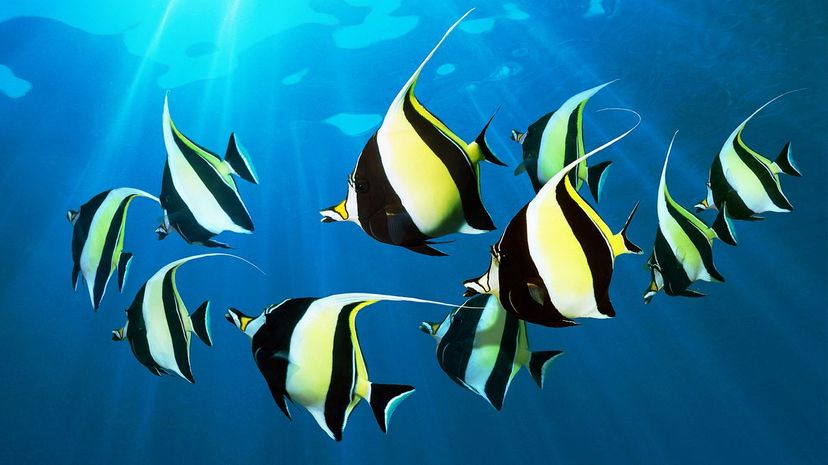
Like the character in the Pixar film, Moorish idols do not respond well to captivity, in part because they're hearty eaters. They are known for their yellow, white and black bands and long dorsal fin.

Reaching about 5 inches in length, the longnose hawkfish resides in tropical reefs and has a long, pointy snout. Its horizontal and vertical red stripes on a white body give it a distinct look.
Advertisement
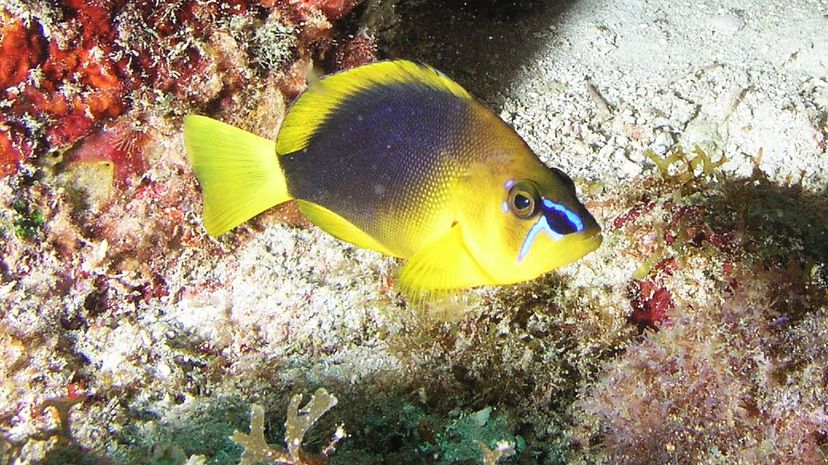
The shy hamlet's head and fins are yellow, but the rest of its body is either blue or black. It can indeed be timid around other fish, especially in aquariums, but it adjusts due to its hardiness.
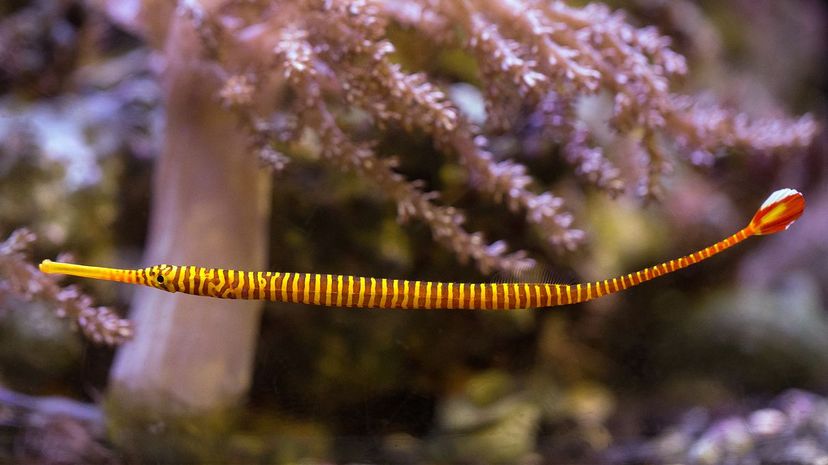
This fish has a long, thin body with trails extending from its head that helps it blend in with reeds. The banded pipefish is common in the Indo-Pacific region and can reach lengths over 7 inches.
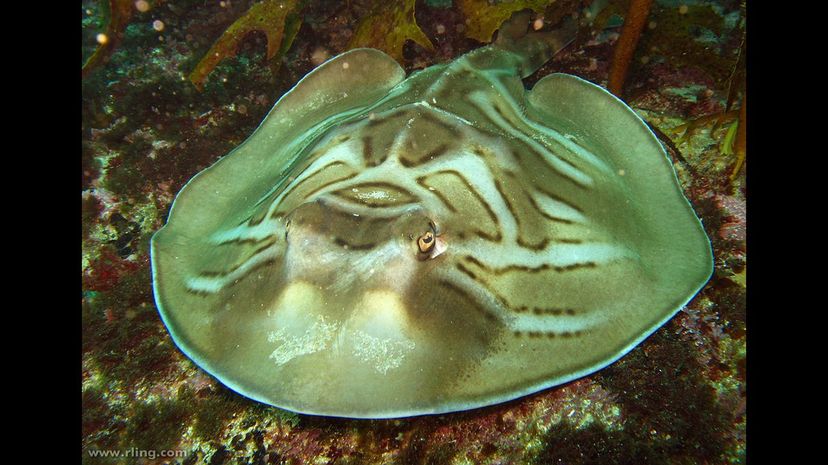
Also called a banjo ray, the fiddler ray makes its home on the sandy floor off the coast of Australia. The ray has an oval shape and gray bands appearing in irregular patterns over its brown body.
Advertisement

The pot-bellied seahorse, or big-belly seahorse, has a protruding stomach and grows up to 14 inches, making it one of the largest seahorses. This species is found around Australia and New Zealand.
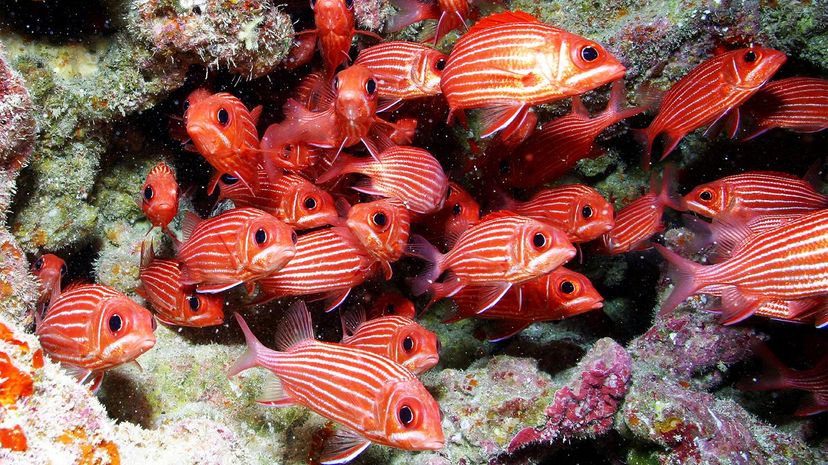
A furtive fish found in Hawaii, the Hawaiian squirrelfish likes to hide in caves and reefs and peek out cautiously before emerging — much like their namesake. The fish is red with thin white stripes.
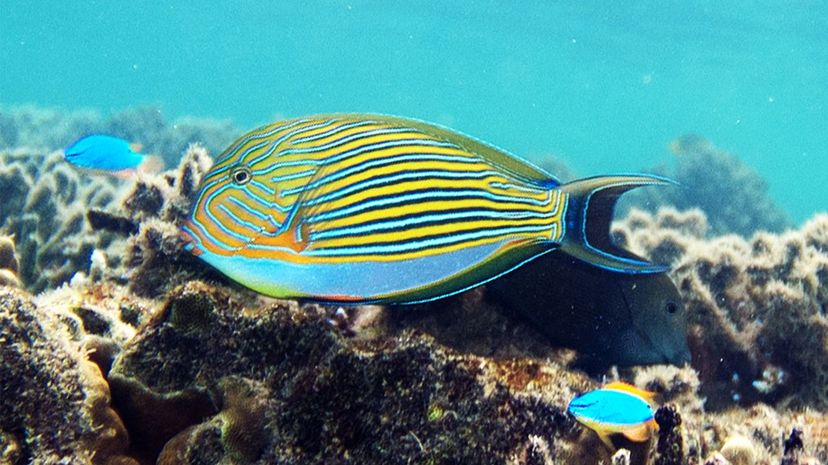
Also called a clown surgeonfish, the clown tang has blue horizontal stripes on a yellow body. The male fish is very territorial, keeping outsiders away from its feeding ground and its females.
Advertisement
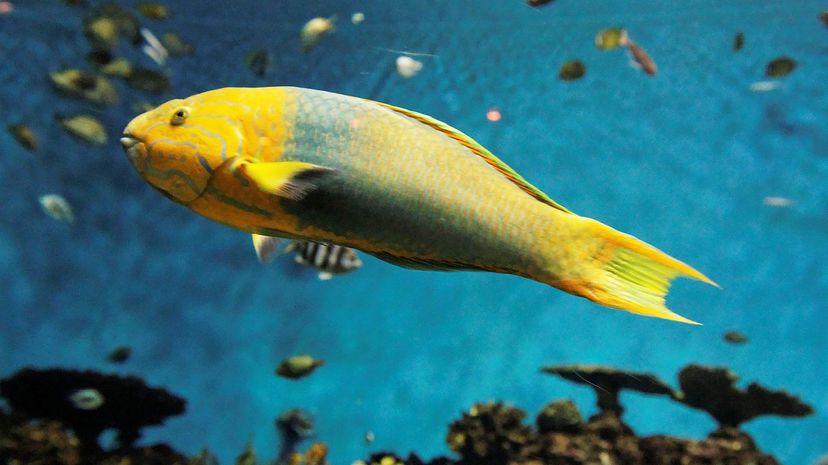
The females of this species are yellow as adults, but the males are bluish. Banana wrasses, or sunset wrasses, tend to be active and aggressive and are common in the Pacific and Indian Oceans.
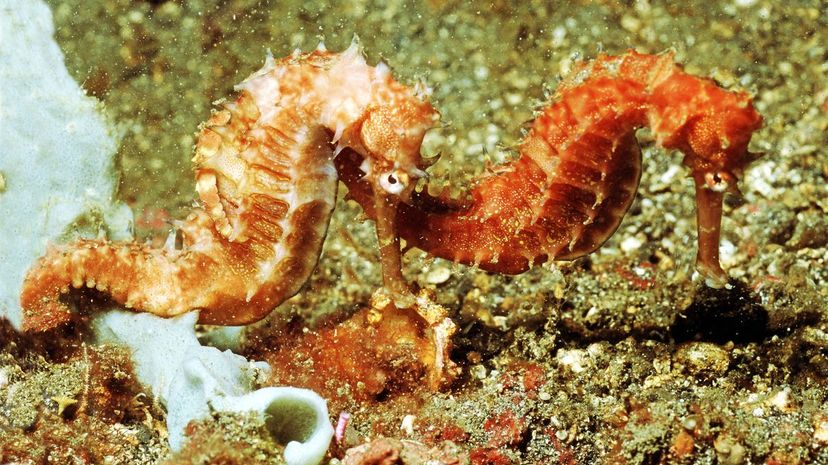
The thorny seahorse, or spiny seahorse, as its name suggests, is covered with sharp spines. The seahorse has a particularly long, thin snout and it eats mostly plankton and crustaceans.
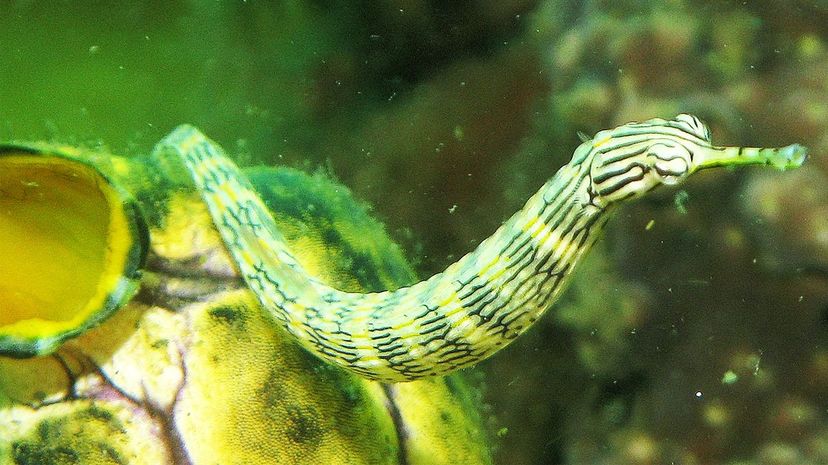
Watch this long pipefish slither across the ocean floor, and you might mistake it for a snake! The dragonface pipefish has varying patterns down its body and a small, tube-like mouth.
Advertisement
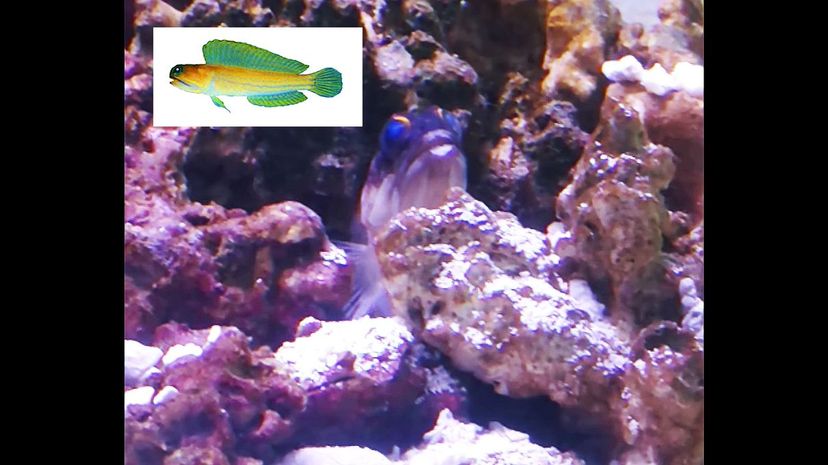
The moustache jawfish gets its name for the brown markings on its face that give the impression of facial hair. Like other jawfish, the fish creates elaborate burrows under the rocks and sand.
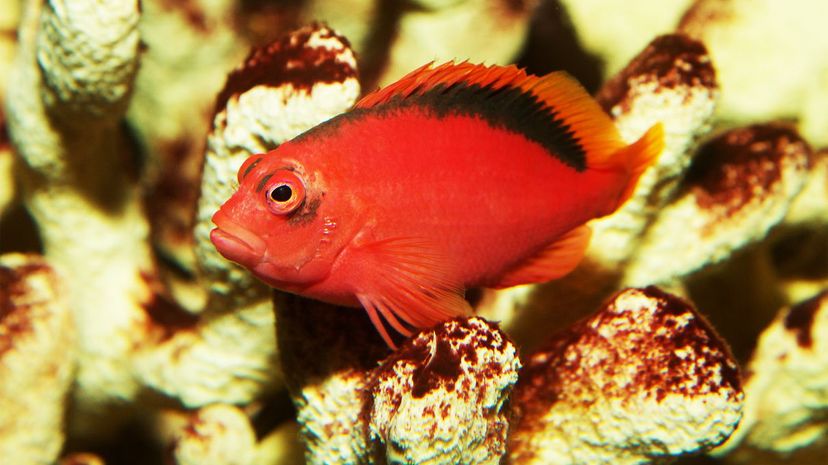
The flame hawkfish even looks like a superhero fish with its vibrant red body and black dorsal fin. However, the fish tends to hide out in coral when bigger fish swim by, so don't expect any heroics.
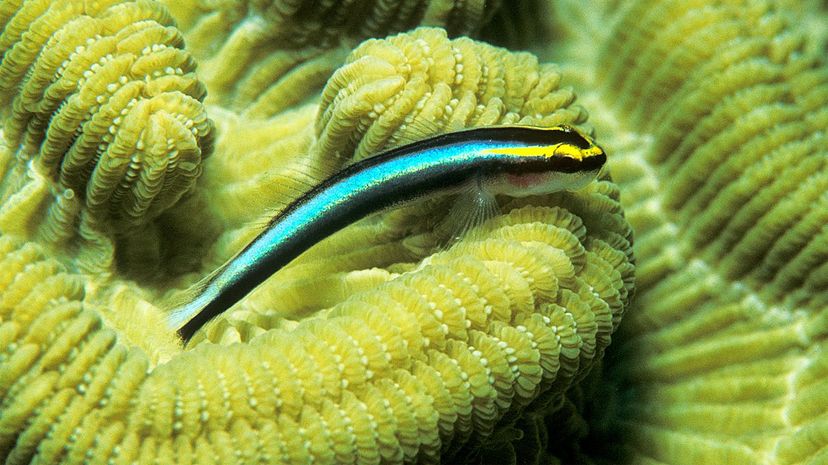
Found in the Atlantic Ocean, the neon goby has a distinctive pattern of light and dark blue stripes. The tiny fish does bigger fish a favor by picking off (and eating) parasites on their scales.
Advertisement
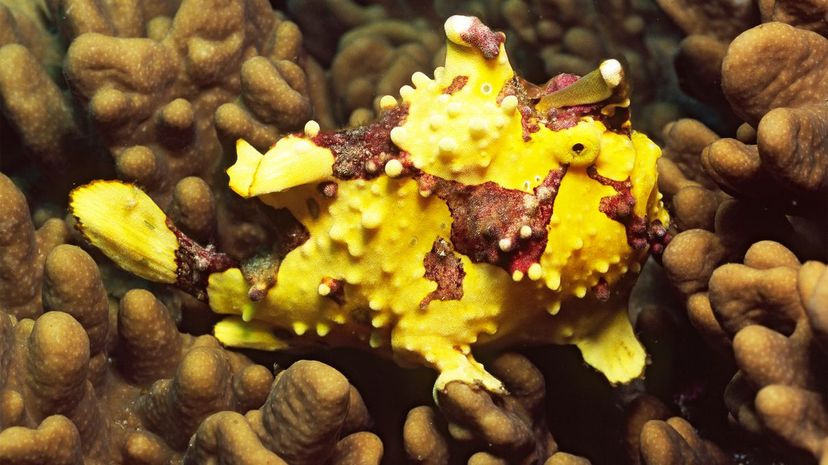
For what some might consider an ugly fish, the warty frogfish is an expert at camouflage. It can even change colors to blend in better! And its mouth stretches wide enough to swallow large prey.